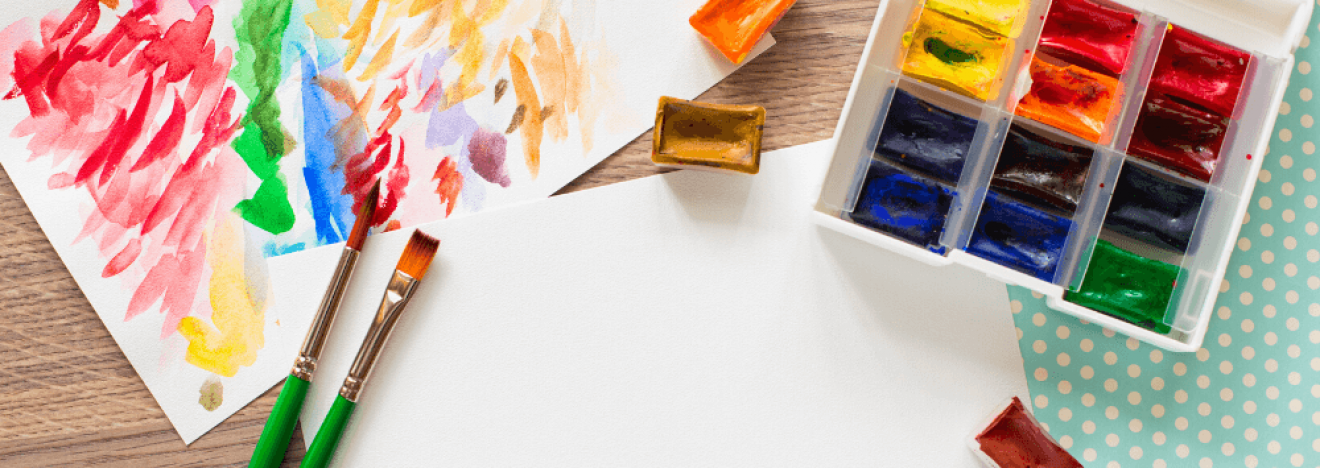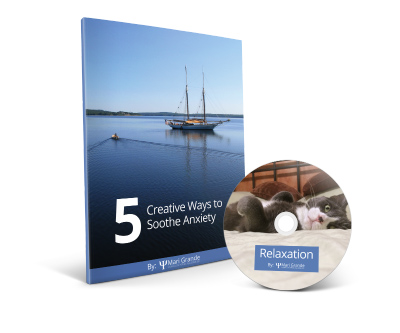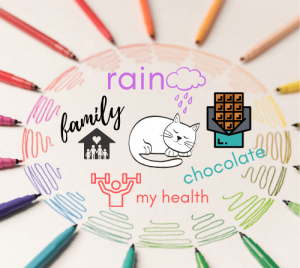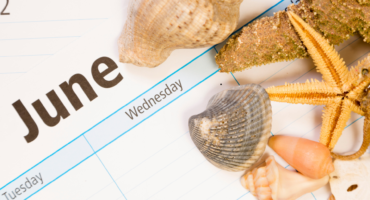
How to Calm Anxiety, an Art Therapist Shares a Way to Help.
People often feel anxiety is a horrible thing. It can feel scary and you just want it to go away!
But what if it’s like the Wizard of Oz? You think the wizard is this big frightening thing, demanding and yelling, and then it turns out to be a bumbling little person behind the curtain.
Learning to get past the scare tactics and figure out what your body is trying to tell you, is helpful to calm your anxiety and make it less overwhelming.
What is anxiety really?
Anxiety is your body’s way of letting you know how it is reacting to what is happening in your world.
If something is triggering your “fight or flight” response, you may experience anxiety.
You may feel it if the world is feeling chaotic and stressful, or out of control.
You may even experience symptoms of anxiety in the middle of the night, right when you were trying to sleep and you didn’t even know you were under stress.
Anxiety is your body’s way of clueing you into how you are responding to these things.
How can you tell it is anxiety?
Symptoms of anxiety aren’t always obvious. It can look different for different people.
The more extreme signs would be flailing your limbs or being unable to stay seated.
You could feel frozen or stiff – eyes darting or fists clenched.
Some people experience fast, shallow breathing, feel their blood coursing through their veins or find their thoughts “racing”.
Yet others may appear quite calm and cool on the outside but inside they may hear their heart pumping fast.
Anxiety can feel like a panic attack or even be mistaken for a heart attack (Always let your medical doctor decide for this one!).
But it can also creep up on us, such as insomnia, increased heartbeat, higher levels of cortisol, inability to complete tasks, easily losing focus, an inability to concentrate, impulsive, or labored decision making.
Whether it’s obvious or subtle, anxiety can be problematic.
There is no one way to experience anxiety and 18% of the population develop an anxiety disorder.
Almost everyone has experienced anxiety in their lives at one point or another.
If it’s so common, what’s the big deal?
Well, symptoms of anxiety can send our autonomic nervous system into a “sympathetic charge”. This means our primitive brain jumps into a “fight or flight” mode, knocking us out of our zone of resilience (that place where we can think, feel, care, and reflect).
When we are in this “fight or flight” mode, our body thinks there is danger and releases all kinds of stress hormones to get us ready for battle.
This undue stress runs havoc on our sense of wellness, causing wear and tear on our body/brain connection, depleting our energy, and affects our ability to bounce back.
In this state, rational thought and problem-solving are more difficult to access. In clinical terms, this means we are in the limbic, emotional region of our brain.
The limbic region is an area meant to keep us safe, alive and functioning. This area controls memories and emotions. When overly activated we feel less “ourselves” and when regulated we find rest, resilience, and clarity.
We need our whole brain online and our entire autonomic nervous system available, including the parasympathetic, calming system. This is where we rest, digest, and more.
The average person experiences highs and lows throughout the day. We wake, we move, we get excited, we get tired, we get bored, we sleep. We ride the waves of our Autonomic Nervous System. When we get too excited, too nervous, too frightened the Sympathetic branch skyrockets and it is harder to think, feel, and sometimes breathe.
Knowing how to activate your calming system is key!
Taking time to breathe, get in nature, doodle, or pet your dog, can shift the direction of your nervous system to activate the Parasympathetic branch so that your breath is deeper, your pupils larger (you take in more information).
Think of the nervous system as a large ocean wave, going up and then down. We want our wave to go up and down and up…
Art is a great way to calm anxiety and I’d love to share an easy exercise to help you do this.
As a licensed trauma therapist for over 20 years, one of my favorite ways to help calm anxiety is by using art.
Art therapy is a deceptively powerful tool.
It is fun and at the same time increases neural functioning by activating several key centers of the brain.
There is scientific evidence to show that engaging in artistic activities calms the Amygdala which is our alarm center (part of the limbic system that also processes positive stimuli). This threat detector seems to enjoy art making as it is not on alert during the creative process.
Art Therapy helps by shifting your focus from thoughts and things to creating and engaging in something outside yourself. Your brain gets a chance to recharge and your body gets to relax.
Art can be a great catalyst for well-being and creating balance in your life.
If you are looking for a way to calm anxiety with the tools and materials you can easily find in your home, this simple “Circle of Gratitude Exercise” is a great option.
Disclaimer: If you are under acute distress, please contact a medical professional or call 911.
How gratitude can help.
Gratitude is a wonderful and effective way to calm anxiety because when we can pause and notice something positive, our brain lights up neural networks that connect our bodies with a sense of calm and clarity.
When our body and brain are in a regulated state, our immune system is strong rather than stressed and depleted (how great is that?).
With that in mind, here is a way to combine feelings of gratitude by using art to calm anxiety:
Circle of Gratitude
Why a circle is so helpful.
A circle is the shape of the earth, the moon, the sun. The circle is a symbol of wholeness and completion. For some the circle has spiritual and religious significance, for others, it can have mathematical significance. Without a circle, there would be no wheel.
The circle is also the shape of a Mandala, which is the Sanskrit word for circle. Mandalas are a symbol of the Universe and meant to help transform ordinary minds to enlightened ones. Helping to focus attention on the self, quieting the mind, and promote healing.
Supplies you’ll need to create your circle:
- You’ll need a dinner size plate.
- Pencils, pens, markers, crayons, pastels, paints, pictures, fabric, objects, glue, and scissors (any or all are fine!).
To create your circle of gratitude, you start by making a short gratitude list of 1-3 things you are grateful for.
Your list can be anything, ANYTHING, but here are some samples to get you started:
I am grateful I can feel the breeze.
I am grateful my toenails keep growing.
I am grateful I feel love for my sister.
How do those feel? What are yours? You can find gratitude simply by looking around your house.
Let’s get started:
- Draw or trace a circle on a blank piece of paper (use a plate that is smaller than the size of your page).
- Use the gratitude list from above, or you can simply notice what you are feeling most grateful about right now.
- Fill in the inside of the circle with images, symbols, colors, shapes, words that represent what you feel grateful for.
- Take a few moments and focus your attention on the contents of the circles.
- If you find this difficult, try thickening the line of your circle. You can even add which things that are disrupting these feelings (like fear, worries, critical voices, loud kids, etc.) but put them on the outside of the circle with the thick line protecting it.
See if this exercise helps you feel better. See if visually separating your good stuff from your icky stuff makes a difference.
Using art in this way helps you support your nervous system and that helps you to regulate your body and your brain which is something we can all use right now, no matter who you are.
Refer back to this Circle of Gratitude at any time and see if this quiets your mind and feel free to make as many Circles of Gratitude as you’d like.
You can also share yours on Instagram and tag me @artandtraumatherapist.
If you’d like additional ways to calm anxiety, you can sign up for my free series: 5 Ways to Soothe Anxiety which will talk about the Circle of Gratitude in more detail and also includes a guided meditation to help you relax.
If you have any questions, let me know in the comments.
Sincerely,

Feeling Anxious? Need Help Relaxing?
Sign up now to receive a FREE 5 Step guide to soothe anxiety and a guided audio track.


I am a Licensed Clinical Social Worker and Creative Arts Psychotherapist with almost 20 years of experience working with individuals, couples, and families. I specialize in using creativity to help people heal from traumatic events.
Arts and healing are my lifelong passions. I studied and exhibited art in California, Greece, and New York. Teaching art in Athens, Greece, whetted my appetite to connect and work with people from different cultures and walks of life. When I returned to the United States, I decided to study art and psychotherapy.




